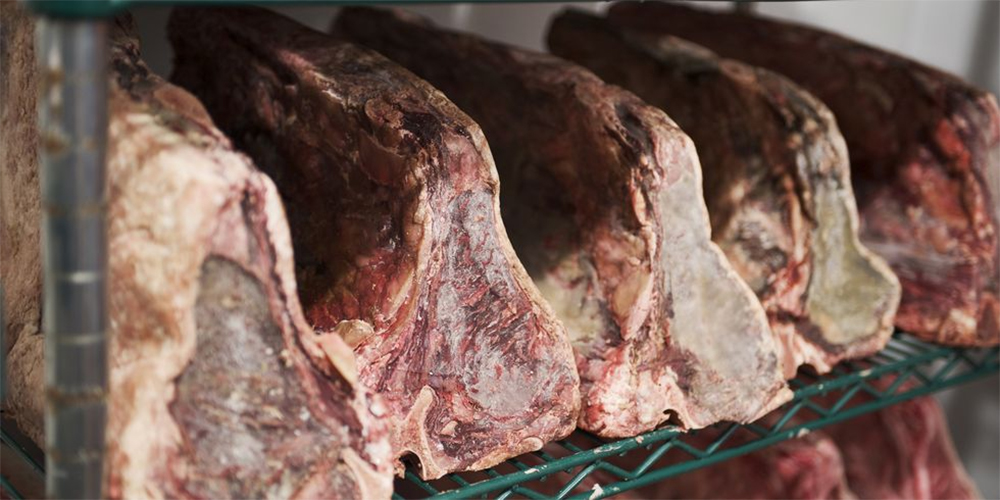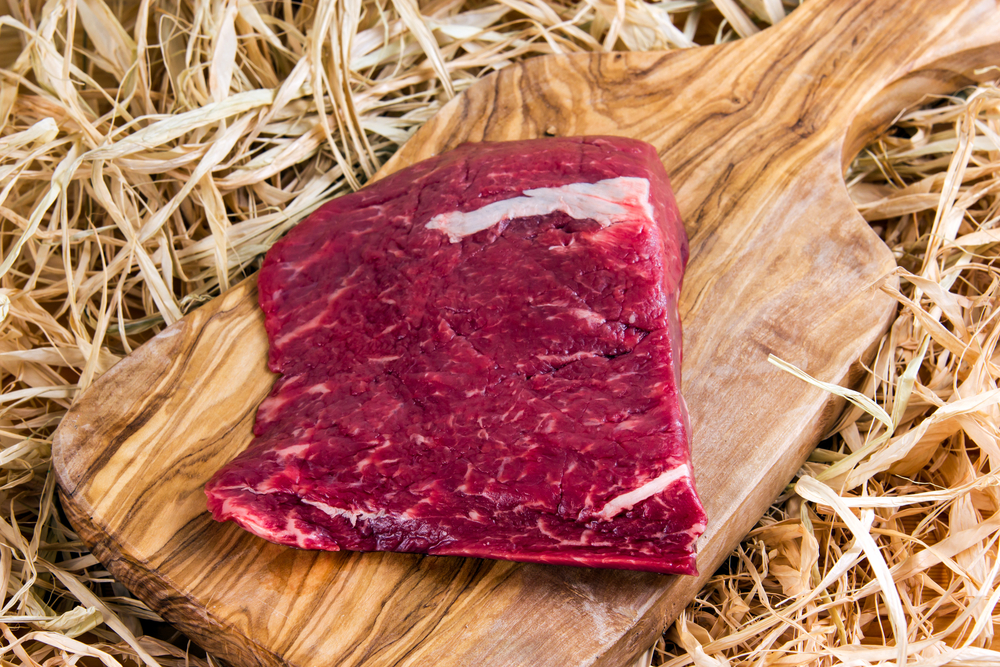What do you know so far about aging meat? Well, there’s a big difference between dry-aged and wet-aged. If you want to learn more about the pros and cons of each, keep reading below.
Pros and Cons of Aging Meat Methods
Like all of the best things in life, great beef is worth waiting for. But for how long, and how do you safely age meat?
Our ancestors dry-aged their beef starting thousands of years ago, which can take weeks. Modern technology allows us to wet-age using plastic bags and vacuum sealers, and the benefits can be enjoyed in about a week.
But why age beef at all when you can pick up a steak at the grocery store and enjoy it within the hour? Aging your beef makes it incredibly tender and flavorful, no matter which method you employ. The flavor difference between an aged steak and a regular steak cannot be mistaken, and everyone can appreciate a well-aged steak.
These days, you’re much more likely to enjoy a wet-aged steak than a dry-aged.
How Dry-Aging Works
Dry-aging refers to hanging large cuts of beef in temperatures just above freezing for weeks. In this time, moisture from the meat will evaporate, causing the meat to shrink and the flavors to condense.
These days, instead of hanging the beef, chefs use dedicated refrigerators and place the meat directly onto the racks. The intense flavors of dry-aging do not appeal to everyone; some people still prefer the flavor of steak straight to the grill.
Because the meat will shrink, you do NOT want to dry-age a single cut of meat. Instead, you want to use a larger whole muscle. Be prepared to cut off and trim a lot of the rind, greatly reducing the yield you’ll get from the cut.
Dry-aged meat does not ever go into a plastic bag. The meat remains “naked.”
If you are dry-aging for the tenderness, peak tenderness is reached at 28 days. Additional aging will really be contributing to the flavor.
True dry-age flavor comes out in about 30 days, but you can continue to age the meat for 60+ days. The “dry-age flavor” refers to the growth of safe mold and bacteria in the meat.
Pros and Cons of Dry-Aging

Pros of Dry-Aged Beef: Tender, flavorful (if you like that flavor)
Cons of Dry-Aged Beef: Time needed, meat shrinkage, loss of product, expensive
Best Cuts for Dry-Aging
- Porterhouse
- Bone-in Ribeye
- Bone-in Strip Steak
How Wet-Aging Works
Wet-aging is much more common than dry-aging these days and much more accessible to the at-home cook. The process of wet-aging includes vacuum-sealing meat in a plastic bag and allowing it to age in the refrigerator for 4-14 days.
The flavor produced by wet-aging is much more universally enjoyed, with the tenderness that both types of aging bring with them.
One of the biggest benefits of wet-aging is that there is no moisture lost from the meat. It retains its juiciness and also minimizes waste when you trim the meat.
If you choose to wet-age at home, be sure you know exactly when the animal was killed and packaged. Trying to wet-age an old steak is a terrible idea – you want extremely fresh meat.
You also need to have the right equipment and be diligent about keeping a clean workspace, including wearing gloves. Get the right dry aging bags for the product you’re aging, from Ribeye to Brisket.
UMAi Dry Ribeye/Striploin Packet
- Age your favorite steak cut in the refrigerator and enjoy premium, naturally tenderized, flavor-rich steaks at a fraction of the typical deli price!
- Includes (3) 12” x 24” bags and easy to follow instructions
UMAi Dry Brisket / Bone-in Packet
- Use your fridge to age whole subprimal cuts of beef with no mess, no odors
- The unique UMAi Dry breathable membrane creates a perfect dry aging environment
Pros and Cons of Wet-Aging
Pros of Wet-Aged Beef: Tender, flavorful, juicy, little waste
Cons of Wet-Aged Beef: A different, less concentrated flavor
Best Cuts for Wet-Aging

- Boneless strip steak
- Filet mignon
- Flat-iron steak
- Flank steak
Both dry-aged and wet-aged steaks can be cooked on the grill or in the oven. You’ll want to use a meat thermometer inserted through the side of the steak to ensure you reach 130°.
Make sure you rest the meat prior to cooking and after cooking and don’t overcook or char the beef! Cooking past medium-rare will remove some of the tenderness you worked so hard to create. We recommend trying both dry-aged and wet-aged steaks to see which pleases your palette more.
What’s your preference for aging meat? Tell us why in the comments section!
Up Next:
- What Meats Make For The Best Jerky? | With 5 Delectable Recipes
- 5 Methods For Preserving Meats For Long Term Food Storage
- A Guide To Meat Preservation In The Wild


